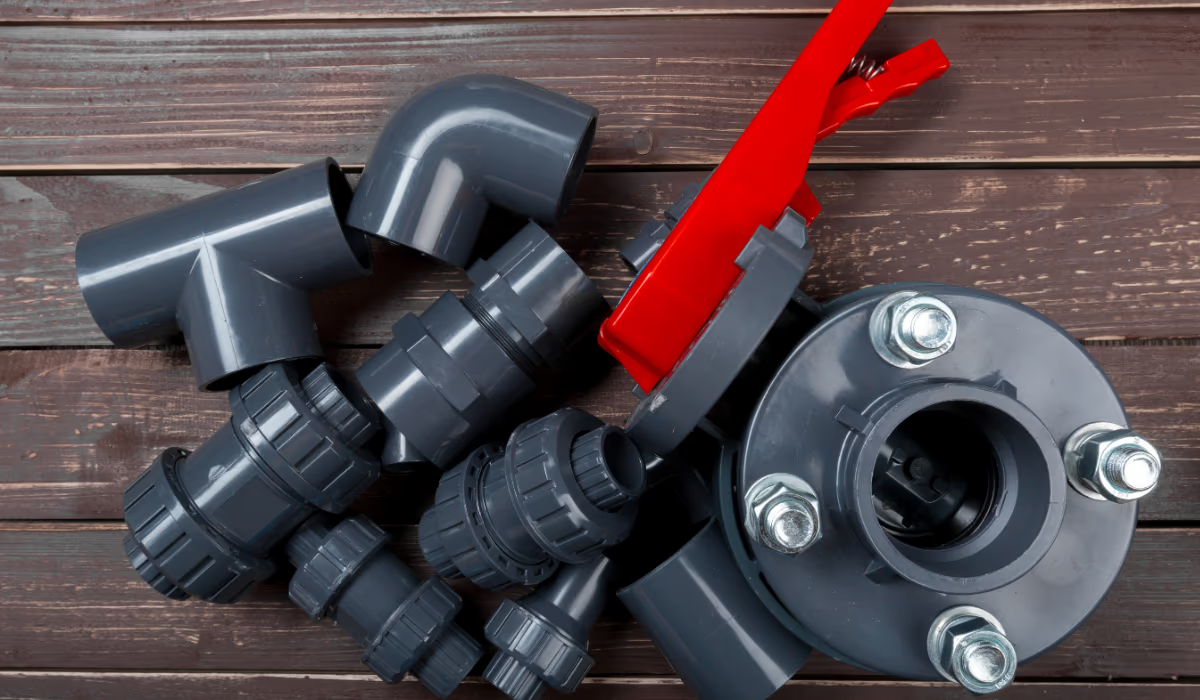Plumbing pipes are the arteries of your home’s water and waste systems. Choosing the wrong type can lead to leaks, corrosion, low pressure, or failure over time. Different materials suit different uses — supply lines, drainage, venting, or exterior underground runs. Knowing plumbing types and their strengths helps you pick pipes that last, perform well, and meet local code requirements.
Copper Pipes
Copper is a long-trusted material for water supply in homes. It is corrosion-resistant, durable, and handles both hot and cold water well. Its advantages include longevity, ability to tolerate high temperatures and pressures, and the fact that it doesn’t degrade in sunlight when exposed. However, copper is more expensive, requires soldered joints (which need skill), and may not be ideal in areas with very acidic or aggressive soils, unless properly protected.
PEX (Cross-Linked Polyethylene)
PEX is a flexible plastic pipe that has become very popular in recent years. It installs easily (bends around corners) and uses fewer fittings, reducing leak points. It’s resistant to scaling, freezing and thawing (when properly installed), and is generally more cost-effective than copper. The downside is that it can’t be used outdoors (exposed to UV) and may not be permissible in all local building codes.
PVC & CPVC
PVC (polyvinyl chloride) is often used for cold water supply lines and drainage. CPVC (chlorinated PVC) is modified to tolerate higher temperatures, making it suitable for hot water supply. These pipes are affordable, easy to work with, and resist corrosion and chemical damage. Their limitations include potential brittleness in extreme cold, and they require solvent welding or compatible fittings.
Galvanized Steel & Iron Pipes
Older homes often used galvanized steel or iron pipes for supply and sometimes for waste. These metals are strong and rigid, but over time they corrode from the inside, reducing interior diameter and affecting water flow. Because of that, many modern renovators replace them. Also, working with metal pipes is heavier and more demanding in labor.
Polyethylene (PE) / HDPE & Other Specialty Pipes
For underground or exterior water lines, materials like polyethylene (PE) or high-density polyethylene (HDPE) are common. These pipes are flexible, tough, resistant to corrosion, and well suited for buried lines. They’re often used for service lines from the street or for irrigation systems. Another specialty option is copper-clad pipes or barrier pipes (with internal liners) for improved performance and durability.
Best Pipe for Water Supply in Home
For most modern homes, a combination of copper or PEX is considered best for interior water supply lines. PEX is often favored for ease and cost, especially in renovations or new builds. Copper offers longevity and robustness. For exterior or buried connections, HDPE or approved PE pipes are often preferred. The “best” choice depends on your local water quality, climate, building code, budget, and the skill set of the installers.
Conclusion
There are many plumbing types — copper, PEX, PVC/CPVC, galvanized steel, HDPE, and specialty pipes — each suited for specific roles in a home’s system. For interior water supply, PEX and copper dominate today, while durable plastics serve exterior and underground uses. Choosing the right pipe means balancing cost, ease of installation, longevity, and compliance with local norms. With the right materials, your plumbing system can serve reliably for decades.
FAQs
Can I mix different pipe materials in one plumbing system?
Yes — transitions are common (e.g. from HDPE underground to PEX or copper indoors). You just need proper connectors or adapters suitable for those materials.
Which pipe type is best in areas with hard water or corrosive conditions?
PEX and CPVC resist corrosion better than metal pipes. If copper is used, proper protective measures or liners may help counter aggressive water.
Are there codes or rules about which pipes I must use?
Definitely. Local building codes vary — they dictate what materials are allowed for supply, drainage, exterior lines, and how transitions must be made. Always check local plumbing codes before finalizing your choice.
How long do various piping materials last?
Copper and properly installed PEX often last 50 years or more. PVC, CPVC, and HDPE can also last many decades under good conditions. Metal pipes often degrade sooner in corrosive environments.
If I’m replacing old galvanized pipes, which new type should I use?
Many people switch to PEX or copper for interior supply lines when replacing galvanized pipes. For exterior or buried lines, switching to HDPE or PE pipe is common. It’s often wise to redo the whole run to avoid weak transitions.







